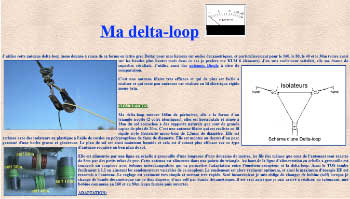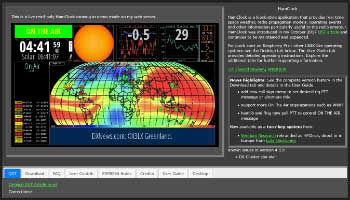 Hits
Hits

Antenne delta-loop 160- 80- 40- 30m
My delta measures 166m perimeter, has the shape of an isosceles triangle 2 identical sides are horizontal and is located at 18m from the ground, I use this antenna delta loop for my HF connections, and in particular for the 160s, 80s, 40 and 30 m
post 05 Dec 2024

Antenna Delta Loop Links →
Auto Tune Multi Band Delta Loop Antenna
The tuner cannot be tuned to an antenna of any size. The power to the part where the voltage is off has a high impedance and the change tends to be steep, making it difficult to tune
Corned Fed Delta Loop
The Delta Loop antenna is one of the famous magical antennas, but in reality, the Delta Loop antenna is not as magical as it's reputation. Despite its reputation as a Multi band antenna, it is a single band antenna. It can be somewhat tricky to make a Delta Loop
De Delta-Loop
A delta loop is a closed loop antenna that normally forms an isosceles triangle. If the delta loop is constructed as an isosceles triangle, it has a gain of approximately 0.5 dB relative to a dipole. The impedance will be around 70 ohms. If we flatten the triangle a little, the impedance can quickly rise to 100 ohms and more. The total length of the conductor can be calculated as follows: 306.3 / f f = frequency in MHz
54
The tuner cannot be tuned to an antenna of any size. The power to the part where the voltage is off has a high impedance and the change tends to be steep, making it difficult to tune
The Delta Loop antenna is one of the famous magical antennas, but in reality, the Delta Loop antenna is not as magical as it's reputation. Despite its reputation as a Multi band antenna, it is a single band antenna. It can be somewhat tricky to make a Delta Loop
A delta loop is a closed loop antenna that normally forms an isosceles triangle. If the delta loop is constructed as an isosceles triangle, it has a gain of approximately 0.5 dB relative to a dipole. The impedance will be around 70 ohms. If we flatten the triangle a little, the impedance can quickly rise to 100 ohms and more. The total length of the conductor can be calculated as follows: 306.3 / f f = frequency in MHz

PSION Greyline Clock PSION Greyline Clock v. 1.0 is a UTC/Local clock showing sunlight/darkness area on the world map

